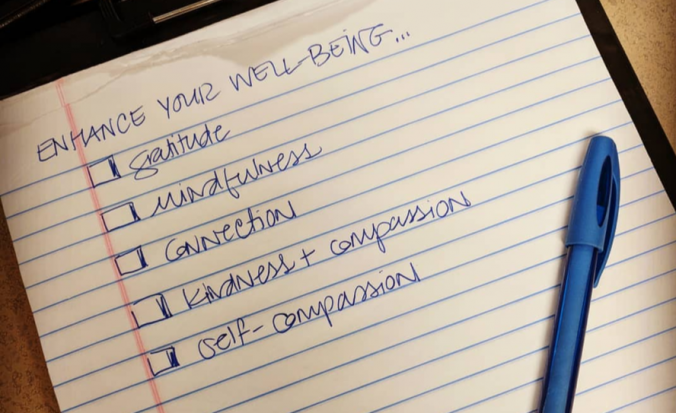Toxic positivity is exactly that – being positive to the point of being toxic. It is positivity in excess. Toxic positivity is dismissive and invalidating. Toxic positive says there is no room for anything but feeling good. Toxic positivity denies the organic, human emotional experience that is expansive and ever-changing. To deny our feelings is to be inauthentic. Even the most zen of human beings are going to have a moment of anger or frustration because guess what? There are simply some experiences that are going to generate feelings of anger or frustration. It doesn’t mean the zen master will forever stay angry or frustrated or that they are flawed for feeling such. It simply is the human emotional experience in action.
Toxic positivity tells you that your emotions are wrong and should not be felt. This can create feelings of guilt and shame for simply feeling what you feel. And now you’re probably going to just keep that to yourself going forward, try to ignore it, and never really spend enough time with those feelings to process the experience. Healing cannot occur when feelings are shoved aside and ignored. This actually creates more emotional distress because, in your avoidance, you have actually doubled your pain. You have the original pain of feeling what you feel, and now – because of guilt, shame, and suppressing the feelings – you also have the pain of feeling bad for feeling it in the first place. Yuck!
When you stifle your feelings and pretend they do not exist, you are not able to hold space for them, identify them, understand them, etc. This disables your opportunity to self-regulate within your emotions. We have a vast list of emotional feeling words for a reason. It is healthy to turn inward, identify the emotion that is present, and label it for what it is (e.g. overwhelmed, sad, disappointed, etc.) to help yourself learn to regulate. Emotion regulation is the healthy coping strategy that helps to keep you from scoffing at your boss, clapping back at your friend, or snarling at your partner.
Additionally, when we’re subjecting others to the “positive vibes only” mentality, we may end up becoming a bit ostracized and isolated. Toxic positivity damages relationships because the message you’re sending to others is that they cannot feel what they feel and cannot be themselves when they’re around you. During stressful events, such as the COVID-19 pandemic, toxic positivity can become incredibly harmful. Recognizing that everyone’s pandemic experience is varied, to dismiss the experiences of those who are experiencing it differently than you or just not in an upbeat perpetual Positive Polly perspective is sending the message to them that there’s something wrong with them for having a hard time. This pandemic has been especially isolating and telling someone they shouldn’t feel what they feel about it could create an even greater isolating effect. We need various forms of creative connectivity and communication now more than ever.
I know it sounds cliche, but the most important relationship you’ll ever have is the one you have with yourself, and it is critical that you authentically show up as yourself – whatever you may be feeling in any given moment. It’s okay to feel the negative stuff because it’s real. And there’s increased knowing of the self and opportunity for growth and change when we get real. Learning to check in with yourself more in an honest way can be really helpful. Get a list of emotion or feeling words and keep it accessible. Pause and check in with yourself to see what’s coming up for you. I share an emotions/feelings wheel with my Instagram followers (@fulfillmentcounseling) every Friday because I believe it to be such a critical piece in our wellness.
When others are sharing how they feel with you, know that this is their experience. It doesn’t have to be how you would feel, and you don’t even have to agree with how someone is feeling in order to be helpful. Validating someone’s experience isn’t saying I feel the same way or that I agree. Through validation, I’m simply acknowledging that your experience is real to you. In action, this may sound like, “I can see that this is upsetting for you,” or “I’m so sorry you’re having such a tough time right now.”
Being able to see the clouds with silver-lining in stressful situations is a skill. Being able to simultaneously hold space for the dark, heavy clouds that surround and drench you is also a skill.











